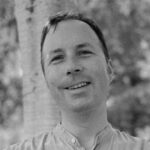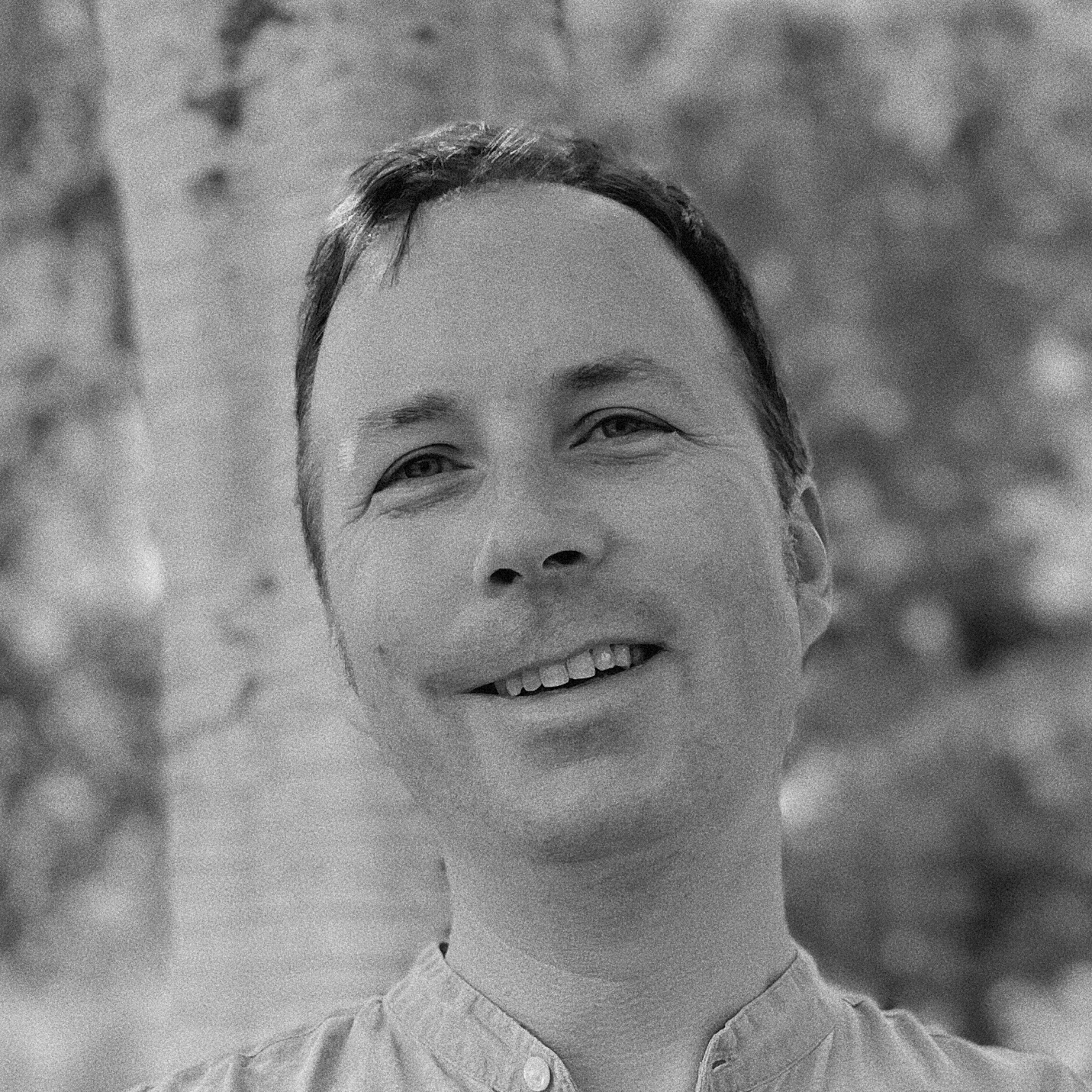
I am a freelance archaeologist, technologist, curator of folk traditions, and a Fellow of the Society of Antiquaries of London.
I specialise in research, visualisation and reconstruction, 3D scanning, photogrammetry, surface analysis and filtering, as well as archive digitisation and audio restoration. My main research interests include surface enhancement of prehistoric petroglyphs (rock art) and early medieval decorated and inscribed stones, and the use of Artificial Intelligence and Large Language Models in the cultural heritage sectors.
I research and curate exhibitions about folk traditions which have been held in both museums and retail spaces. I also write articles for popular publications and blogs to widen awareness of the historical basis of many folk customs and traditions.
I have made detailed 3D records of small artefacts up to entire monuments contributing to archaeological projects across the UK, designed historic photograph digitisation projects, restored historic audio recordings, curated exhibitions, lectured and taught at local societies to large universities, and helped museums, libraries and archives with diverse digital projects.
As a freelancer I am available to work on projects anywhere in the world. My professional profile is available on LinkedIn. Please contact me with any enquiries.
I am an alumni of the University of Southampton, where I achieved a BA in Archaeology and an MSc in Archaeological Computing, and have been a professional archaeologist since 2001. In early 2024 I completed certified courses in Generative AI (Prompt Engineering, Advanced Data Analysis and Trustworthy Generative AI) from Vanderbilt University.
Research areas
Recovery and enhancement of inscriptions, rock art, and decorated stonework using high resolution 3D (photogrammetry / scanning) and Reflectance Transformation Imaging (RTI).
Development of 3D surface enhancement methodologies through the application of digital filtering such as depth mapping, ambient occlusion, trend surface, sky visibility, positive openness and many more.
Applications of Artificial Intelligence (AI) and associated technologies and how they can by applied to the study of the past, including intangible heritage. This is a large and fast-paced area of research, covering everything from audio restoration of historic recordings through to recording rock art and the use of generative AI and prompt engineering.
Mobile rapid 3D capture using photogrammetry (Object Capture API), Apple iPhone LiDAR, NeRFs, Gaussian Splatting, including workflows, UI/UX, and quality. I use and evaluate most of the available apps, including as an alpha/beta tester for new scanning apps.
Folk traditions of Cornwall, particularly researching large seasonal community celebrations, their earliest origins and descriptions, to inspire revivals and continuity today.
Publications
Below is a list of my publications, talks and lectures to give an overview of the breadth of my work. If you have any questions, please contact me.
- Goskar, T. A., A. Carty, P. Cripps, C. Brayne & D. Vickers. (2003). The Stonehenge Laser Show. British Archaeology, 73,9-15.
- Carty, A., Goskar, T.A. (2005). Surveying Knowlton Church and Henge using 3D Laser Scanning. Archaeoptics.
- Goskar, T.A. (2006). Podcasting the Past. Podcast User Magazine, 11, 26-28.
- Goskar, T. A., McHarg, C. (2006). Walk to work learning about old Dorset, British Archaeology, 86. (on Web 2.0 and archaeology)
- Goskar, T. A. (2006). Wessex Archaeology and Flickr: How We Use Web 2.0. Culture24 (Formerly 24 Hour Museum: feature article).
- Goskar, T. A., Brayne, C. (2008). A long history of arrivals and departures. British Archaeology, 98.
- Isaksen, L., Goskar, T. A., Cripps, P. (2008). Making People Believe. British Archaeology, 100, 20-27. (A history and review of archaeological computing)
- Goskar, T. A. (2009). Using the Web to reach wider audiences. Institute for Archaeologists Yearbook and Directory 2009, 29-31.
- Goskar, T. A. & Earl, G. P. (2010). Polynomial texture mapping for archaeologists. British Archaeology, 111, 28-31.
- Goskar, T. A. & Cripps, P. (2011). Interactive Landscape Relighting. Remote Sensing and Photogrammetry Society, Archaeology Special Interest Group Newsletter (Spring 2011), 4-5.
- Goskar, T. A. (2012). Amesbury Archer to Archaeocast: Wessex Archaeology and the Web, in Bonnachi, C. (ed.) Archaeology and Digital Communication, Towards Strategies of Public Engagement, London: Archetype.
- Goskar, T. A. (2014). Rock Art at Carwynnen Quiot. In: Richards, P & Nowakowski, J (ed). A monument like no other: The Restoration of Carwynnen Quoit, St Austell: The Sustainable Trust, pp 21.
- Goskar, T. A. & Brown, M. P. (2016). The Gulval Evangelists. British Archaeology, 146.
- Jones, A. M. & Goskar, T. A. (2017). Hendraburnick ‘Quoit’: recording and dating rock art in the west of Britain. Time & Mind, Vol 10, No 3. Taylor & Francis.
- Jones, A. M. & Goskar, T. A. (2017). Carvings and bright lights at Hendraburnick Quoit. British Archaeology, 158, 38-43
- Goskar, T. A. (2018). A little less mute: 3D laser scanning prehistoric rock art and early medieval inscribed stones in Cornwall. In: Jones, A. M. & Quinnell, H. (ed). An Intellectual Adventurer in Archaeology: Reflections on the work of Charles Thomas, Oxford: Archaeopress, pp 175-182.
- Goskar, T. A. (2022). Guise Dancing: the Christmastime mumming tradition of West Cornwall. Tradfolk.
- Goskar, T. A. (2023). Golowan – Penzance’s midsummer celebration. Tradfolk.
Book & Article Contributions
- Preston-Jones, A. & Okasha, E. 2013. Corpus of Anglo-Saxon Stone Sculpture, XI, Early Cornish Sculpture. OUP/British Academy. (Contribution of 4 plates, identification of early medieval carvings and their symbolism on a cross-base in Gulval, and commentary on photogrammetry methodology).
- Jones, A.M. and Quinnell, H., 2022. Tregiffian entrance grave, St Buryan, Cornwall: excavations 1967–72. Cornish Archaeology, 61, pp.1-34. (contributed 3D survey of rock art, technical information and enhanced surface images to reveal the cup marks)
- Valdez-Tullett, J. et al. (2023) ‘Revealing the Earliest Animal Engravings in Scotland: The Dunchraigaig Deer, Kilmartin’, Cambridge Archaeological Journal, 33(2), pp. 281–307. doi:10.1017/S0959774322000312. (contributed digital analysis of the rock art panel, enhanced digital images of the stags and animals)
Exhibitions
Royal Academy of Arts, London (2007): Audio/visual installation for the Society of Antiquaries at “Making History – Antiquaries in Britain 1707-2007”, a 3D fly-through of the Stonehenge landscape using LiDAR, a panoramic view of Stonehenge from the centre, and a 3D visualisation of close-range laser scan data showing the rock art and graffiti.
Salisbury and South Wiltshire Museum, Salisbury (2008): Audio/visual installation for the Society of Antiquaries at “Making History: 300 Years of Antiquaries in Britain“, a 3D fly-through of the Stonehenge landscape using LiDAR, 3D visualisation of the skull and bones of the Amesbury Archer demonstrating metric techniques, and 3D visualisation of WWI & WWII graffiti carved into trees on Salisbury Plain.
Guise Dancing: A Cornish wintertime mumming tradition (2016): Pop-up exhibition in a large retail space in Penzance, attracting more than 2000 people within 14 days. The exhibition included community donations of costumes and props from this vibrant Christmastime folk tradition.
Golowan: The origins of Penzance’s midsummer festival (2021). Large and colourful pop-up exhibition taking over the entire retail space of a former Argos store. Despite COVID restrictions, this exhibition attracted 1,500 people, taking them on a journey back to the 18th century and through first-hand accounts of the midsummer celebrations in Penzance during the 19th century, up to a centrepiece installation of banners and costumes from the past 30 years since the festival’s revival. Over 4,000 words of original research, recyclable and reusable interpretation boards. Due for redisplay in 2024.
Faddying it thro’ the Streets: the earliest accounts of Helston’s Flora Day (2024). Occupying a gallery within the Museum of Cornish Life, this was the first public display bringing together rare and early descriptions, opinions, and music of the town of Helston’s annual Spring festival, displayed alongside a curated display of related objects from the collections of the Museum of Cornish Life.
Papers, talks, lectures & webinars
- The Stonehenge Laser Scan Project. Joint paper at the British Academy, London. April 2004.
- Lasers and Archaeology. Lecture at King’s College, Taunton June 2004.
- Visualising 3D Laser Scans. Computer Applications in Archaeology UK (CAAUK) conference. January 2005.
- Web 2.0 and Archaeology. Paper with the Council for British Archaeology (CBA) Director, Mike Heyworth. Institute for Archaeologists conference, Edinburgh. April 2006.
- Podcasting – should museums listen? Lecture at the Museums Association “Digital Dialogues” conference. Victoria and Albert Museum, London. June 2007.
- 3D Visualisation in Archaeology. Lecture to CBA Wessex at Salisbury Museum, Wiltshire. July 2007.
- Using digital technology to visualise the past. Lecture with Stuart Eve at the Institute of Archaeology, University College London. January 2011.
- “Challenges and possibilities for the adoption of Reflectance Transformation Imaging in the UK’s commercial archaeology sector”. Digital Transformations: New developments in cultural heritage imaging at The Ioannou Centre for Classical and Byzantine Studies, University of Oxford, 25 February 2011.
- Digital Archaeology. Talk at Falmouth University, Cornwall. 31 May 2013.
- Digital surface recording in archaeology: some recent case studies from Cornwall. Talk for the Cornwall Archaeological Society, Truro. 7 November 2013.
- Digital Public Engagement. Lecture for the MA Public Archaeology course at the Institute of Archaeology, UCL, London. 17 March 2014.
- Do you see what I see? Examining 3D data in archaeology. Talk for the Cornwall Archaeological Society, Truro. 5 November 2015.
- The Morrab Library Photographic Archive. Talk with Mary Ellery (Chair of the Morrab Library) for the Rotary Club of Penzance, Cornwall. 17 March 2016.
- 3D capture in Archaeology. Talk for Kernow DAT (Dev/Art/Tech), Penzance. 15 September 2016.
- New Light on Inscribed Stones in West Penwith. Lecture for the Cornwall Archaeological Society annual conference, “Archaeology in Cornwall”. Penzance, 26 November 2016.
- 3D Technologies in Archaeology. Lecture for Café Scientifique, Redruth, Cornwall. 19 January 2018.
- Reading the unreadable: 3D scanning and enhancing the Cunaide Stone inscription. Lecture for Hayle Heritage Centre, Hayle, Cornwall. 3 July 2019.
- Successfully Capture any Object in 3D. Webinar for Scenario. Online, 19 May 2022.
- Surface analysis and artificial intelligence for archaeologists. Lecture for Meneage Archaeology Group (MAG). 25 February 2023.
- Guise Dancing: The main tradition at Montol. Talk for Cornish Heritage in Penzance. 18 December 2023.
- Teasing information from stones in Cornwall: using 3D and Al to reveal hidden details on carved surfaces. Lecture for Cornwall Archaeological Society. 18 January 2024.
- Curating “Faddying it thro’ the Streets: The earliest accounts of Helston’s Flora Day”. Lecture on folk customs for the Museum of Cornish Life. 30 April 2024.
- Wintertide Customs of Old Penzance. Lecture for Penzance Old Cornwall Society. 15 October 2024.
- Digital Stones – Unlocking Cornwall’s past using 3D technology and Artificial Intelligence. Lecture for In Search of Tywardreath. 22 May 2025.
Teaching
I have contributed to the MA in Public Archaeology at UCL’s Institute of Archaeology through a lecture to students and via the CASPAR seminar series.
I have contributed to the MSc course in Archaeological Computing at the University of Southampton (2005-2009), and lectured to continuing education students at Birkbeck College, London.
I regularly teach 3D capture techniques through either dedicated one-on-one sessions or to small groups as part of archaeological recording projects.
Some other quick facts
- Worked with 3D capture in one way or another since 2002
- Podcaster since 2005
- Blogger since 2004
- Tinkered with location-based tech since 2002
- All-round geek and early adopter of tech
- Plays trad music on the mandolin
